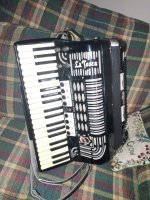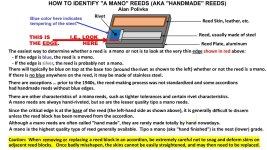Mike K
Active member
I just got a fantastic deal on a La Tosca accordion today. Never heard of that make and it says it was made by Gretsch...the guitar company. Everything appears to be in great condition, do not think it was played a lot. Case and back pad are like new...maybe the pad was replaced. Mine looks beat compared to this one. Has Musette tuning so great on the French music side. Stereo pickups built in.
A few weird things, the register selectors are in a different order than other accordions I have played. Two lower selections on top then switches to Violin and Musette, then Master in the Middle, then back to Organ below. Just need to get used to it.
This makes three....I may have to sell my Giulietti Continental. It has the extra three bassetti rows on top and I have never been able to get used to playing them up there. I learned on a Convertor style and it is just awkward for me trying to play way up there. Also makes it awkward to switch registers in the middle of a song.
The straps are in good shape but there is very little cushioning on them. Previously I read that some people had gotten a "harness" instead of straps and a back strap. Would like to investigate that option, any recommendations appreciated. Also any history on the La Tosca accordions would be interesting to hear.
A few weird things, the register selectors are in a different order than other accordions I have played. Two lower selections on top then switches to Violin and Musette, then Master in the Middle, then back to Organ below. Just need to get used to it.
This makes three....I may have to sell my Giulietti Continental. It has the extra three bassetti rows on top and I have never been able to get used to playing them up there. I learned on a Convertor style and it is just awkward for me trying to play way up there. Also makes it awkward to switch registers in the middle of a song.
The straps are in good shape but there is very little cushioning on them. Previously I read that some people had gotten a "harness" instead of straps and a back strap. Would like to investigate that option, any recommendations appreciated. Also any history on the La Tosca accordions would be interesting to hear.




